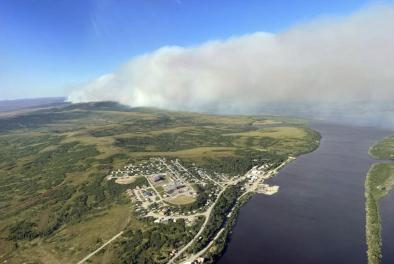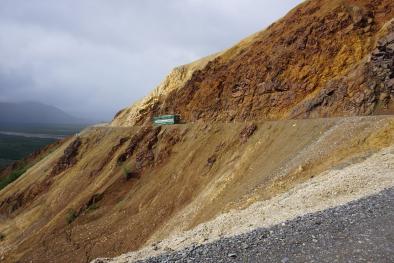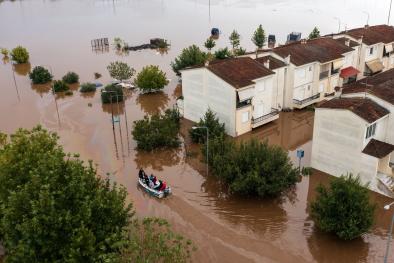Science Source
Increases in extreme precipitation over the Northeast United States using high-resolution climate model simulations
Study key findings & significance
- The study uses a model with higher spatial resolution than previous studies to analyze September–November extreme precipitation in the US Northeast.
- The model simulates much more realistic extreme precipitation, including frequency, amplitude, and temporal variability.
- The model projects unprecedented rainfall events over the region by the mid-21st century due to human-caused climate change.
- Very extreme events (>150 mm/day; 6 in/day) may be six times more likely by 2100 than in the early 21st
Related Content
Science Source
| Proceedings of the National Academy of Sciences
Human influence has intensified extreme precipitation in North America
Megan C. Kirchmeier-Young and Xuebin Zhang
Science Source
| Science Advances
Unprecedented climate events: Historical changes, aspirational targets, and national commitments
Noah S. Diffenbaugh, Deepti Singh, and Justin S. Mankin
Science Source
| American Meteorological Society
Precipitation Extremes: Trends and Relationships with Average Precipitation and Precipitable Water in the Contiguous United States
Kenneth E. Kunkel, Thomas R. Karl, Michael F. Squires et al
Science Source
| Nature Communications
Social inequalities in climate change-attributed impacts of Hurricane Harvey
Kevin T. Smiley, Ilan Noy, Michael F. Wehner et al
Science Source
Satellites reveal hotspots of global river extent change
Study key findings & significance
- The study looks at eight hotspots of significant river changes, including:
- (1) eastern Siberia, (2) Tibetan Plateau, (3) middle northern Siberia, and (4) middle eastern Asia, where river flow increased, and
- (5) the Great Plains in central North America, (6) middle-eastern South America, (7) western Siberia, and (8) northern India, where river flow decreased
- Climate change generally explains the contrasting pattern of river extent changes in these eight hotspots, except in middle Eastern Asia,
Related Content
Science Source
| Geophysical Research Letters
Strengthening contrast between precipitation in tropical wet and dry regions
D. Polson, G. C. Hegerl
Science Source
| Nature
Globally rising soil heterotrophic respiration over recent decades
Ben Bond-Lamberty, Vanessa L. Bailey, Min Chen et al
Science Source
| Proceedings of the National Academy of Sciences
Climate change and California drought in the 21st century
Michael E. Mann, Peter H. Gleick
Science Source
| AMS Earth Interactions
Evidence that Recent Warming is Reducing Upper Colorado River Flows
Gregory J. McCabe
Science Source
Regime shift in Arctic Ocean sea ice thickness
Study key findings & significance
- Long-term sea-ice measurements from the Fram Strait reveal that the dominant form of Arctic sea ice shifted around 2007, from thick and deformed ice to thinner, more uniform ice.
- As a result of this shift, the proportion of thick, deformed ice fell by about half.
- It has not yet recovered, and this is expected to affect heat and momentum exchange in the region.
Author quotes
“Ice is much more vulnerable than before because it’s thinner, it can easily melt."
Related Content
Headline

Jul 21, 2022 | CNN
A 'Not Normal' Amount Of Greenland's Ice Melted Last Weekend
Headline

Jun 14, 2022 | Climate Nexus Hot News
Yup'ik People Defend Homes From Climate-Fueled Fires In Yukon Delta
Headline

Apr 27, 2022 | Climate Nexus Hot News
Permafrost Melting In What Is Now Alaska
Headline

Jan 20, 2022 | Yahoo News
Southern snowstorm likely worsened by climate change, scientists say
Science Source
Changing intensity of hydroclimatic extreme events revealed by GRACE and GRACE-FO
Study key findings & significance
- Intense drought and heavy rainfall events occurred more often in the last eight years — the hottest years on record — than in the previous decade
- Warmer global temperatures are increasing the extent, duration, and severity of these extremes, and are having more of an effect than natural climate patterns
- The study provides an emerging picture of distortions in the total amount of water both above ground and also in aquifers deep beneath the Earth’s surface, where most of the freshwater that humans depend upon comes from
Related Content
Science Source
| American Meteorological Society
Getting ahead of Flash Drought: From Early Warning to Early Action
Jason A. Otkin, Molly Woloszyn, Hailan Wang et al
Science Source
| American Meteorological Society
Flash Droughts: A Review and Assessment of the Challenges Imposed by Rapid-Onset Droughts in the United States
Jason A. Otkin, Mark Svoboda, Eric D. Hunt et al
Science Source
| Nature Climate Change
Rapid intensification of the emerging southwestern North American megadrought in 2020–2021
A. Park Williams, Benjamin I. Cook & Jason E. Smerdon
Headline

Oct 26, 2023 | Climate Nexus Hot News
The Planet is ‘Under Siege,’ Scientists Say


